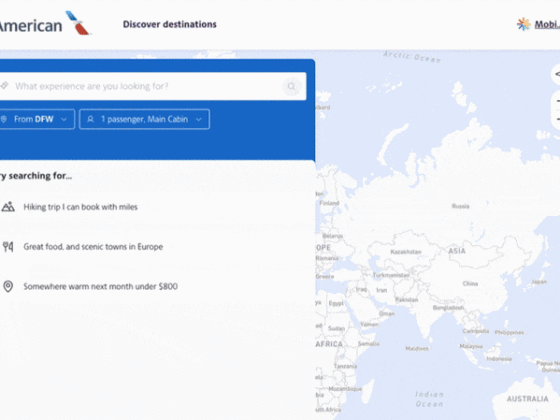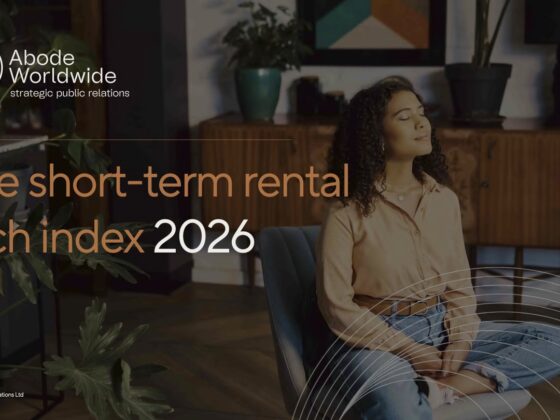The hotel industry, with its blend of major chains and boutique properties, reflects the eclectic tastes of global travelers. But this diversity introduces complexities, particularly in online reservations and technological integration. Explore the history, challenges, and innovative solutions shaping this fragmented landscape.
Navigating the Fragmented Hotel Industry
Over the years, the hotel industry has adapted to our changing world. With major chains and independent establishments competing in a common market, challenges have arisen, especially in areas like online booking. Delving deeper, it becomes evident that factors ranging from global shifts to technological advancements have significantly influenced today’s travel sector.
Factors Driving Fragmentation
-
Globalization: Historically, a handful of major hotel chains dominated the global market up until the 1980s, offering travelers a standardized experience wherever they went. However,the winds of globalization, coupled with increased travel accessibility, ushered in the 1980s with a surge in independent hotels and boutique chains. These establishments, from the cozy corners of English bed-and-breakfasts to the luxurious confines of Bali retreats, catered to a more diverse set of traveler preferences. Such diversification not only enriched the traveler’s choice but also fragmented the supply side, making the market more heterogeneous.
-
Regulatory Changes: Over the years, shifts in regulatory frameworks have played a significant role in molding the industry. A prime example is the U.S. Department of Transportation’s 2004 deregulation of global distribution systems. This pivotal move simplified the entry process for new travel distribution players, democratizing the market. Such regulatory shifts not only fragmented the market but also paved the way for unconventional partnerships. The resultant market segmentation, based on evolving consumer needs, led to enhanced efficiency and profitability for both new entrants and established players.
-
Digital Revolution: The late 20th and early 21st centuries witnessed a seismic shift in the form of the digital revolution. This era, marked by rapid technological advancements, saw the rise of Online Travel Agencies (OTAs) like Expedia. These platforms democratized hotel visibility, allowing even the smallest of hotels to showcase their offerings shoulder-to-shoulder with industry giants. This digital democratization, while empowering for many, added another layer of fragmentation to the industry.
-
Consumer Preferences and Alternative Accommodations: The evolving tastes of travelers have always been a driving force in the industry’s transformation. With the rise of platforms like Airbnb, there was a noticeable shift towards alternative accommodations. These platforms offered unique, localized experiences, further diversifying the choices available to travelers and adding to the industry’s fragmentation.
-
Technological Advances and Competition: The relentless pace of technological innovation and the ensuing competition meant that hotels constantly had to adapt and innovate. From smart rooms to AI-driven customer service, the race to offer the latest amenities and services further diversified the industry. Additionally, the dynamic trends in travel, influenced by factors like eco-tourism and experiential travel, continually reshape the industry’s landscape, adding to its fragmented nature.
Challenges in a Digital Age
The dawn of the digital age, marked by the rapid rise of OTAs and widespread internet accessibility, brought with it a new set of challenges for the hotel industry.
-
Overwhelming Choices for Consumers: While the digital landscape allowed hotels of all scales to showcase their offerings to a global audience, it also inundated travelers with a plethora of choices. With countless booking platforms at their fingertips, consumers often found themselves navigating a complex web of options, sometimes leading to decision paralysis.
-
Complex Distribution Networks: The sheer number of OTAs and direct booking platforms transformed the once straightforward distribution network into a labyrinthine maze. Hotels had to juggle between multiple platforms, ensuring rate consistency, availability, and managing reviews across all of them, which often proved to be a logistical nightmare.
-
Data Islands and Fragmented Guest Profiles: The digital expansion led to the creation of “data islands” – pockets of vital guest information scattered across various platforms. This fragmentation of data meant that hotels often didn’t have a holistic view of their guests. For instance, a guest might have booked through an OTA, dined at a hotel restaurant using a different platform, and used yet another service for spa bookings. Collating this data to create a comprehensive guest profile became a significant challenge.
-
Marketing and Personalization Hurdles: With data spread thin and wide, tailoring marketing strategies became more complex. Hotels found it challenging to target their potential guests effectively, leading to less efficient marketing campaigns. Moreover, the personalization of guest experiences, a key differentiator in today’s competitive landscape, became harder. Without a unified view of guest preferences, delivering bespoke experiences that cater to individual tastes was an uphill task.
-
Dependency and Commission Costs: While OTAs provided hotels with increased visibility, they also came at a cost. Hotels often had to pay hefty commissions to these platforms, impacting their bottom line. This dependency on OTAs also meant that many hotels found it challenging to drive direct bookings, which are typically more profitable.
-
Reputation Management: In the digital age, a single negative review can significantly impact a hotel’s reputation. Managing and responding to reviews across multiple platforms became a crucial task, requiring dedicated resources and strategies.
While the digital age unlocked unprecedented opportunities for the hotel industry, it also introduced a set of complexities that hotels continue to grapple with.
The OTA Dilemma
OTAs emerged as powerful intermediaries in the hotel booking landscape, bridging the gap between travelers and accommodations. However, the fragmented nature of the hotel industry presented them with a unique set of challenges and opportunities.
-
Expansive Listings, Expansive Challenges: The fragmentation allowed OTAs to offer a vast array of choices to consumers, from luxury resorts to quaint bed-and-breakfasts. This diversity was a significant selling point, drawing travelers to these platforms for the sheer variety they offered. However, managing such an extensive portfolio came with its own set of challenges. Ensuring that each listing was up-to-date, accurate, and reflective of the actual offering became a monumental task.
-
Data Integration Woes: With hotels using different property management systems, integrating this varied data into a unified platform was no small feat for OTAs. They had to ensure that room availability, rates, and other vital information from thousands of hotels worldwide were synchronized in real-time to prevent issues like overbookings or outdated pricing.
-
Maintaining Rate Parity: Given the competitive nature of the industry, rate consistency became a significant concern. OTAs had to work closely with hotels to ensure that the rates listed on their platforms were consistent with those on other channels. This required sophisticated rate comparison tools and regular audits.
-
Transparent Pricing and Hidden Costs: Travelers today demand transparent pricing. OTAs had to ensure that the prices listed on their platforms included all fees, taxes, and other charges. This transparency was crucial in building trust with consumers. However, navigating the varied pricing structures of different hotels and regions often proved complex.
-
Deciphering Consumer Behavior: The digital age brought with it a deluge of data. While this data offered invaluable insights into consumer behavior, it also posed a challenge. OTAs had to invest in advanced analytics to sift through this data, distinguishing between enduring shifts in consumer preferences and transient trends. For instance, understanding whether a surge in eco-friendly hotel bookings was a long-term shift or a passing fad was crucial for OTAs to tailor their offerings.
-
Balancing Hotel Relationships: While OTAs provided hotels with increased visibility, they also had to strike a delicate balance in their relationships with these establishments. Hotels often viewed OTAs as both partners and competitors. Ensuring that this relationship remained symbiotic, without encroaching too much on direct bookings, was a nuanced challenge.
While the fragmented hotel industry offered OTAs an opportunity to curate a diverse and expansive portfolio, it also thrust upon them a myriad of operational and strategic challenges that required continuous innovation and adaptation.
Solutions: Addressing Fragmentation
-
Integrated Property Management Systems (PMS): The evolution of PMS solutions has been a game-changer for the hotel industry. These modern systems offer a centralized platform where hotels can manage a plethora of operations, from guest reservations to housekeeping schedules and billing. By integrating with OTAs, these systems ensure that rate and inventory updates are synchronized in real-time across all platforms, minimizing discrepancies and potential conflicts.
-
Direct Booking Platforms: Recognizing the importance of fostering direct relationships with guests, many hotels have taken the initiative to develop their proprietary booking platforms. These platforms not only reduce the dependency on OTAs (and the associated commission costs) but also provide an avenue for hotels to offer exclusive deals, packages, or loyalty rewards to guests who book directly.
-
AI and Data Analytics: The power of artificial intelligence and data analytics cannot be understated in today’s digital age. By leveraging these technologies, any business in online travel can gain deep insights into consumer behavior, preferences, and booking patterns. This enables them to optimize pricing strategies, forecast demand, and tailor guest experiences to individual preferences, ensuring a memorable stay and fostering guest loyalty.
-
Blockchain Technology: Often associated with cryptocurrencies, blockchain technology has potential applications far beyond that realm. In the context of the online travel industry, blockchain can revolutionize the booking process by offering a transparent, decentralized ledger of transactions. This eliminates the need for intermediaries, reduces transaction fees, and ensures secure, instantaneous bookings. Guests, hotels, and OTAs can transact with confidence, knowing that their data and funds are secure.
-
Hotel and Room Mapping: With thousands of hotels and rooms available globally, ensuring consistency and accuracy in listings across platforms is crucial. Hotel mapping tools and room mapping tools address this by standardizing global hotel datasets. By ensuring that properties aren’t duplicated and that room descriptions are consistent across platforms, these tools provide a unified data source. This not only reduces operational inefficiencies but also ensures that guests have a clear and accurate understanding of what they’re booking, enhancing their overall experience.
-
Specialized Solutions: As the industry evolves, specialized solutions are emerging to address increasingly technical challenges. Cupid, for instance, harnesses the power of AI to offer a robust hotel mapping management system. Such platforms ensure that hotels are correctly matched and listed across various OTAs and booking platforms, reducing discrepancies and enhancing the accuracy of listings.
As the hotel industry grapples with the complexities of fragmentation, these solutions offer a beacon of hope, ensuring streamlined operations, enhanced guest experiences, and optimized revenue streams.
The Road Ahead
Adaptation is crucial in the dynamic hospitality industry. While fragmentation presents challenges, it also showcases the industry’s depth and variety. Solutions like hotel and room mapping, combined with technology and collaboration, will guide the industry forward, focusing on evolving traveler needs.










